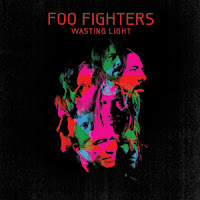Gramsci’s theory of hegemony is where a
social class, usually A or B, has control and influence over the other classes,
usually C1, C2, D and E. The dominant class chooses what is ‘common sense’,
what is ‘natural’ and what is ‘true’ and deliver these to the inferior classes
to passively accept and believe, which they are expected to due to the gap in
social standing. The dominating class uses representation to construct its own
variations of reality, which they use to influence and maintain power over the
other classes.
This is particularly relevant in media, for
example the dominating company Universal uses its power to create realities and
showcase them to the masses via film, which leads to the generic classes
adopted Universal’s preferred reading of their text, which is exactly as
intended. This in turn can also contribute to the audience’s learned cultural
experiences, to the point where it becomes a ‘truth’ and ‘common sense’,
possibly altering previous beliefs, and increasing their overall dominance.
Stuart Hall takes Gramsci’s theory further,
claiming that the dominant class attempts to appear as though it is reflected
reality, whilst really constructing it to suit its own motives. In his
‘Encoding/Decoding’ paper (1980), Hall argues that the readers do not simply
accept the preferred reading as expected; he suggests there is more thought
involved. He believed that dominant readings are produced by those whose social
situation favoured the preferred reading. In this way, he suggests that it is
the social standing that determines, or at least heavily influences the
reading, leading to agreement for the dominant reading, contrasting with the
conflict created from the oppositional reading. Similarly to the way I disagree
with the Hypodermic Needle theory, Hall recognises that audiences do look
beyond what they are fed and expected to accept. He suggests a negotiated
reading, where several aspects are considered during the formation of an
opinion, whilst although social standing is taken into account, it is not the
defining point.
Gramsci and Hall’s theories are relevant to my music video ‘Vince The Loveable Stoner’. On the assumption that my video could enter the market and establish itself successfully, I used the social
leverage to accept dominance over my viewers, and to become a gategeeper so I
could included content at my will, rather than to satisfy individual demand.
Once established, this would in theory enable total control over the passive
majority. I agree with Hall that it would be more a case of dominant reading
than instant preferred reading; and I believe negotiated readings are more
common than passive acceptance. I used my dominance to create an amusing teenage reality throughout my video. I used editing to display the hyper real and increase likeability to
influence my audience into my preferred reading – to make a favourable
impression for my video, the song and the actors. However, despite my preferred reading, I unfortunately ended up with an unintentional reading. The song is named 'Vince The Loveable Stoner' and I've shown teenagers acting as though high; so I've accidently condoned drugs, which I assure you I never meant to do!
I used design elements such as green screen, stop motion and colour tinting to create comedy to gain followers. I had the power to create a preferred reading for my text, using my control as a gatekeeper to keep the impression delivered
favourable. I altered and created my own reality in an attempt to achieve and
maintain dominance over my audience. Despite this, I took Hall’s theory into
account and changed my approach accordingly. For instance I chose to deliver a
partial reflection of reality by casting actual students to
give my audience familiarity and connection, which gave them the opportunity to form their own negotiated reading. However,
despite this, I was still able to manipulate their reading by omitting certain errors, and using editing to create the best possible view whilst keeping the realism. Mixing the real and hyper real gave me more believability so I could therefore exaggerate the humour without losing my audience. This was my version of reality
whilst appearing to reflect reality, as Gramsci includes in his theory.
As much as I influenced my audience into
adopting my opinions through representation, I agree with Gramsci when he says
the habit can be broken. He believed that if any class wanted to overthrow the
existing dominant class, they would need to progress from passively accepting
in light of their inferior social situation and look at the bigger picture. He
believed they would need to rationally and intelligently decide on their own
morals, truths and common sense, whilst taking every opportunity and
compromising where necessary in order to gain social standing and leadership. I
think this could greatly affect the media for the better, allowing and
encouraging different opinions; and at the risk of sounding like a preacher,
rather than letting the world deteriorate into a state of mindless
brainwashing, expansion and knowledge should prevail.















